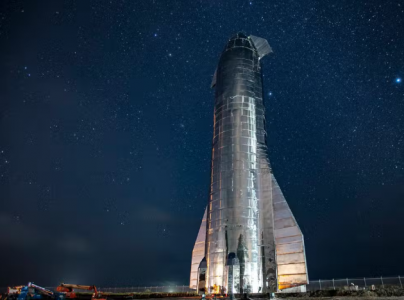your current location is:Home > TechnologyHomeTechnology
Webb Telescope shows Jupiter's rings and moons in new photos

Photos just taken by the Next Generation Webb Telescope (JWST) offer a glimpse into the rings around Jupiter.
Saturn is surrounded by the most beautiful rings in the solar system - Saturn's rings. In fact, it is not the only planet with rings in the solar system, but the rings around other planets are too dim to be easily observed by previous telescopes.
Jupiter is the largest planet in the solar system, and Saturn is the second largest. It stands to reason that the larger the planets, the more likely they are to have rings around them. Because of their gravitational pull, they can draw more debris from space into orbits around them, creating rings. Since Saturn has such obvious rings, it doesn't seem plausible that Jupiter doesn't.
A study published on the preprint site arXiv on July 13 found that Jupiter's rings are not obviously related to Jupiter's moons.
"If Jupiter had Jupiter rings, it should look like Brighter because Jupiter is much closer to us than Saturn."

Jupiter is about 365 million miles from Earth at its closest, and Saturn is 746 million miles from Earth at its closest.
Like Jupiter and Saturn, Uranus and Neptune have rings around them, but only those around Saturn can be seen without advanced telescopes, the researchers said. The Webb telescope, which observes in the infrared wavelengths, is highly sensitive and can see these rings that are not obvious to other telescopes.
Studying the rings around a planet can speculate about the planet's evolutionary history, such as which previous impacts it may have experienced. Consisting of billions of debris from comets, asteroids and moons, Saturn's rings cover a fairly wide area, with a combined diameter equivalent to 27 Earths wide.
By analyzing the ages of these fragments, scientists can infer their origins, either from the Kuiper belt in the outer solar system or from nearby moons. Through this information, scientists can infer the historical process of planetary evolution in the entire solar system.
The study created a computer model of Jupiter and its four surrounding moons - Ganymede (Ganymede), Callisto (Callisto), and Io (Jupiter). The respective orbits and evolution of Jupiter's rings for Europa (Europa, Europa).
It turned out that these four moons of Jupiter hinder the development of Jupiter's rings. "We found that once a large ring is formed around Jupiter, it is quickly destroyed by its four moons. One of them is the largest moon in the solar system," Kane said.
The study found that these moons are so massive that they can eject debris from objects that enter Jupiter's rings. The researchers initially assumed that Jupiter had a large ring in the past, and then gradually disappeared, but they later found that this is unlikely.

Next, researchers will explore Uranus' rings. A peculiarity of Uranus is that its axis of rotation is almost parallel to the plane of the solar system, which means that it is in a rolled state. Scientists estimate that this may have been caused by a previous impact, and that the ring around it is mainly from debris from that impact. The validity of this guess can be tested by studying its rings.
"To astronomers, they [the rings around planets] are like bloodstains on the walls of crime scenes," Kane said. "The rings around giant planets hide clues to important catastrophic events that have occurred there in the past."
related articles
Article Comments (0)
- This article has not received comments yet, hurry up and grab the first frame~













